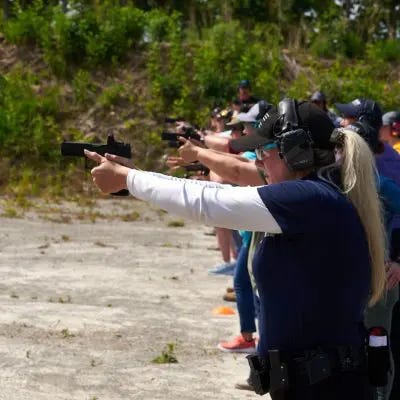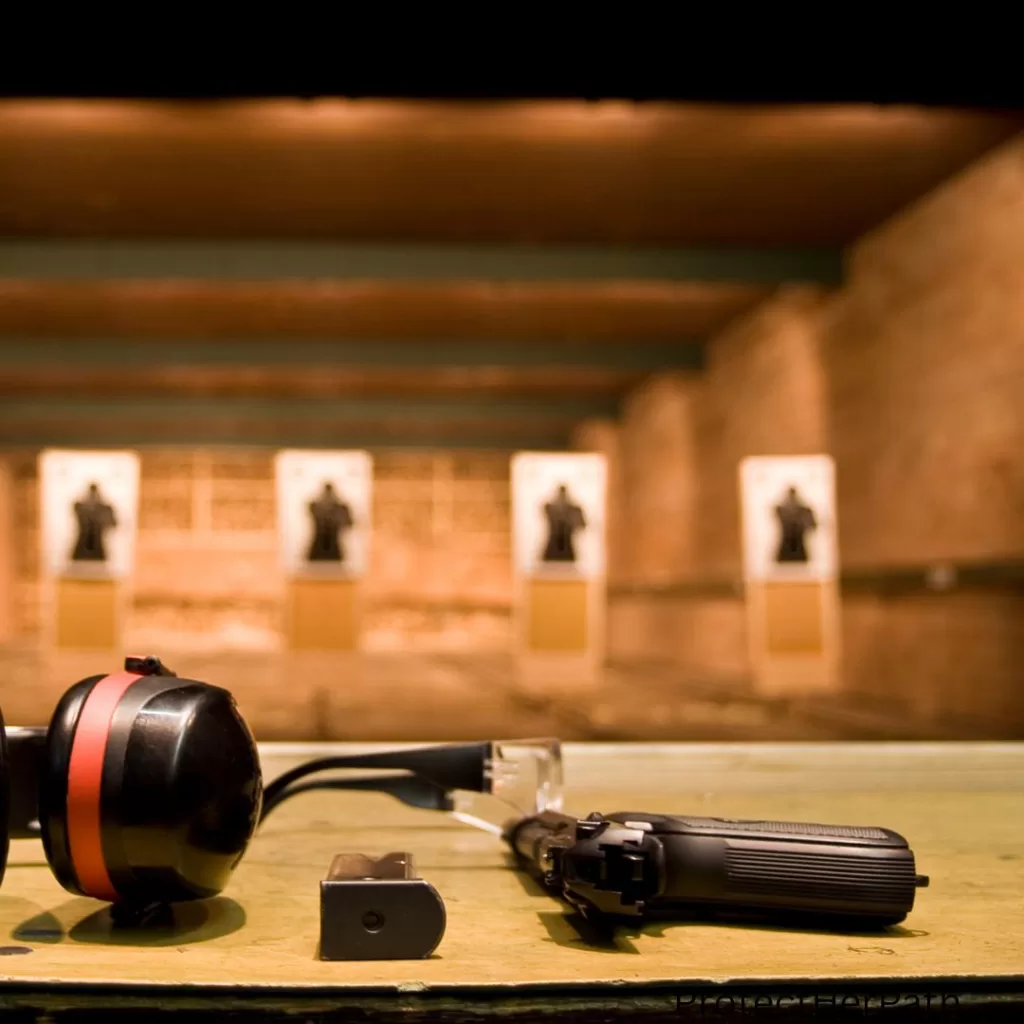Essential Training for Gun Owners: Classes and Certifications

Gun owners bear significant responsibilities, and proper training is a critical component of responsible firearm ownership. For women committed to their safety and empowerment, understanding the essentials of firearm training is crucial. This guide provides a comprehensive overview of the types of training and certifications that can enhance your skills and confidence as a gun owner.
Why Training is Essential
Proper firearm training is not just about handling a gun safely, it’s about being prepared for various situations and understanding the legal and ethical responsibilities that come with gun ownership. Here’s why training is essential:
- Safety: Training ensures that you handle your firearm safely, minimizing the risk of accidental discharge or mishandling. Safety training covers crucial aspects like proper storage, handling, and maintenance.
- Skill Development: Effective training helps you develop the skills needed for accurate shooting, quick decision-making, and effective self-defense. It also enhances your ability to manage stress and maintain control in high-pressure situations.
- Legal Knowledge: Understanding the legal aspects of firearm ownership and self-defense is crucial. Training often includes information on laws related to firearm use, self-defense, and your rights and responsibilities.
- Confidence: Adequate training builds confidence in your ability to use your firearm effectively. This confidence translates into better decision-making and preparedness in real-life scenarios.

Types of Training for Gun Owners
- Basic Firearm Safety Courses
- Purpose: These courses cover the fundamental principles of firearm safety, including safe handling, storage, and operation of firearms. They are ideal for new gun owners or those seeking a refresher on basic safety practices.
- Content: Topics typically include firearm types and mechanisms, safe loading and unloading, trigger control, and basic marksmanship.
- Duration: Basic courses usually last a few hours to a full day, depending on the provider.
- Concealed Carry Training
- Purpose: Concealed carry training is designed for individuals who wish to carry a concealed firearm legally. This training covers the specific skills and knowledge needed to carry a firearm discreetly and responsibly.
- Content: Topics include concealment techniques, drawing from concealment, situational awareness, and legal considerations related to concealed carry.
- Duration: Concealed carry courses often range from one to two days and may be required to obtain a concealed carry permit.
- Self-Defense Training
- Purpose: Self-defense training focuses on using a firearm for personal protection in real-life scenarios. It emphasizes tactical skills and decision-making under stress.
- Content: Training includes defensive shooting techniques, movement and positioning, threat assessment, and de-escalation strategies. Scenario-based drills and simulations are often part of the curriculum.
- Duration: Self-defense courses can vary from one day to several days, depending on the level of instruction and depth of material covered.
- Advanced Firearm Training
- Purpose: Advanced training is for those who have mastered basic skills and want to enhance their proficiency. It includes advanced shooting techniques and tactical strategies.
- Content: Advanced training covers skills such as rapid target acquisition, multiple target engagement, shooting from various positions, and advanced weapon handling.
- Duration: These courses are typically more intensive and can last from a few days to a week.
- Tactical Training
- Purpose: Tactical training prepares gun owners for dynamic and high-stress situations, often involving multiple attackers or complex scenarios.
- Content: Training includes advanced tactics, such as room clearing, low-light shooting, and tactical reloads. It often involves high-intensity drills and simulations.
- Duration: Tactical courses are usually several days long and require a higher level of physical fitness and prior training.
- First Aid and Trauma Care
- Purpose: While not directly related to shooting, first aid and trauma care training is essential for handling injuries in case of an emergency.
- Content: Courses cover basic first aid skills, trauma care, and the use of medical supplies in emergency situations.
- Duration: First aid courses typically range from a few hours to a full day.
Certifications and Permits
- Concealed Carry Permit
- Purpose: A concealed carry permit allows you to carry a firearm concealed on your person. Obtaining this permit usually requires completing a state-approved concealed carry course.
- Requirements: Requirements vary by state but often include completing a training course, passing a background check, and demonstrating proficiency with your firearm.
- Renewal: Concealed carry permits typically require periodic renewal, which may involve additional training or requalification.
- NRA Certifications
- Purpose: The National Rifle Association (NRA) offers a range of certifications for firearm instructors and enthusiasts. These certifications demonstrate a high level of expertise and commitment to safe firearm use.
- Certifications: The NRA offers certifications such as NRA Basic Pistol, NRA Personal Protection Inside the Home, and NRA Personal Protection Outside the Home.
- Requirements: Each certification has specific training and testing requirements, which are detailed on the NRA’s website.
- State-Specific Certifications
- Purpose: Some states have specific certification requirements for firearm training and self-defense courses.
- Content: State-specific certifications often include legal education, safety training, and proficiency testing tailored to local regulations.
- Requirements: Check with local authorities or firearm training organizations for information on state-specific certifications.
Choosing the Right Training Program
- Research Providers
- Reputation: Look for training providers with a strong reputation for safety and effectiveness. Check reviews, ask for recommendations, and verify credentials.
- Instructor Qualifications: Ensure that instructors are certified and have relevant experience in both firearms training and real-world applications.
- Course Content
- Relevance: Choose courses that match your needs and goals. For example, if you’re interested in concealed carry, ensure the course covers all necessary aspects of concealed carry laws and techniques.
- Curriculum: Review the course syllabus and ensure it includes practical training, scenario-based drills, and opportunities for hands-on practice.
- Facilities and Equipment
- Range Facilities: Ensure that the training facility has adequate and safe range facilities. The environment should be conducive to learning and practicing shooting skills.
- Equipment: Verify that the training program provides or allows access to the necessary equipment, including firearms, ammunition, and safety gear.
- Cost and Scheduling
- Affordability: Consider the cost of the training program and whether it fits within your budget. Some programs may offer discounts or payment plans.
- Scheduling: Choose a program with scheduling that fits your availability. Flexible options, including weekend or evening classes, can be beneficial.
Proper training is a cornerstone of responsible gun ownership. For women who are committed to their safety and empowerment, understanding the essentials of firearm training and certifications is vital. By investing in the right courses and certifications, you not only enhance your skills but also ensure that you are well-prepared to handle various situations safely and effectively. Remember, the journey to becoming a proficient and responsible gun owner involves continuous learning and practice. Stay informed, stay prepared, and prioritize safety in every aspect of firearm ownership.
Stay connected with us on Facebook and Instagram for more self-defense tips, safety insights, and empowering content tailored to help women walk their path with confidence. Let’s keep the conversation going. Join us today!






[…] if used responsibly. Whether you choose to carry in your purse, on your body, or both, the key is training and awareness. Carrying a firearm is a serious responsibility, so make sure you’re ready to […]